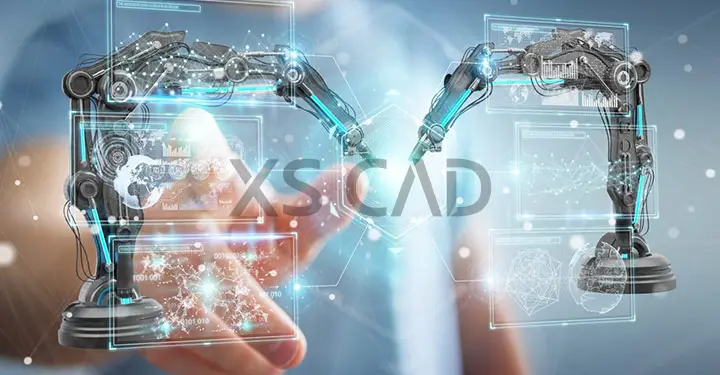Our Articles

Digital Twin – An Unavoidable Relation in Construction?
Some relatives make themselves tenaciously familiar. They may not always be valued and may be pushy at times, but they usually have your best interests at heart. The concept of digital twin in construction could be that unavoidable relation – full of good intentions, practical assistance and involved processes. Digital twins show how a project evolves, how it develops at every stage and results in seamless building construction workflows. An increasing number of facility managers use digital twins to help allocate space and manage assets while helping construction stay true to design.
A virtual replica of a physical product or assets, a digital twin can be regularly updated in real-time. This digital replica is created in an environment where design modifications can be made such that it reflects identically in the physical space. Simulations can be run and tested for easy edits. That way, it can be used to analyse and test fresh strategies. Regular updating means that the digital twin is as close physically to the actual building as possible. Having identical data and layout as the original, project stakeholders can remotely access all relevant information.

In a scenario that includes Building Information Modelling (BIM) technology, how are virtual building design models such as digital twins going to contribute?
Relevance of Digital Twins
Digital twins bridge the gap between form and function. As part of a design, a space is a series of dimensions and part of a broader structural framework. To assign purpose for that space, designers need to understand who will use it and what will they use it for. A digital twin can catalog this information.
A digital twin tends to be useful after construction and can bridge design and building asset management. Connecting the digital twin with Integrated Workplace Management Systems (IWMS) turns it into an entity that can be used to manage space and assets.
Roles of Digital Twins
Digital twins, or identical twins to constructed buildings, offer the same benefits as BIM models to facilities management. They offer a holistic view of critical systems so that the build process can be streamlined. Similar insights can be offered to facility managers to properly utilise building assets.
In effect, it is a short hop from a BIM model to a digital twin. Facility managers may obtain the digital twin from project developers, the construction management firms or develop it themselves.
AR/VR
Integrating digital twins into an AR/VR world will pave the way for significant strides in terms of visualisation. Typically, digital twins are shown on 2D screens. Using VR, viewers can immerse themselves in the digital twin environment for improved understanding of the finished building before construction begins. Similarly, with AR, the digital twin can be overlaid on the physical building so that viewers can see the building’s inner workings to help faster decision-making.
Informed Predictions
Using VR or AR technology with a digital twin, one can see the results of alterations in real-time. Combined with highly advanced machine learning technology, it is possible to include data on structures, market, public spaces, etc.
Real-time 360-Degree View
Merging VR and AR technology with digital twins facilitates an uninterrupted flowing 360-degree view of a structure to experience a space using AR glasses or devices. Users can walk through a space, seeing connections and clashes or faults with electrical, heating or power installation in real-time. This helps improve security, prepare for crises efficiently and streamline building operations. While pairing digital twins to VR and AR technology, machine learning algorithms and AI result in greater efficiency.
To know more about digital twin
Other advantages of digital twins include helping visualise processes such as computational fluid dynamics (CFD), where liquids and gases in 3D spaces can be viewed easily.
While the use of digital twins in construction is still fairly raw, some studies show that, on average, a digital twin can save approximately 20% to 30% of development costs. Thus, using BIM modelling technology and laser scans for surveys, a digital twin can be effectively utilised for space optimisation.
XS CAD has valuable experience providing BIM modelling and creating construction documentation for general contractors and consultants. Our range of services for facilities management professionals for space optimisation and to be used for CFD, Integrated Workplace Management Systems, across the world, and we can convert point clouds to architectural and MEP BIM models. We create these models and drawings by using Revit, AutoCAD and BIM Collaborate Pro for cloud collaboration.

